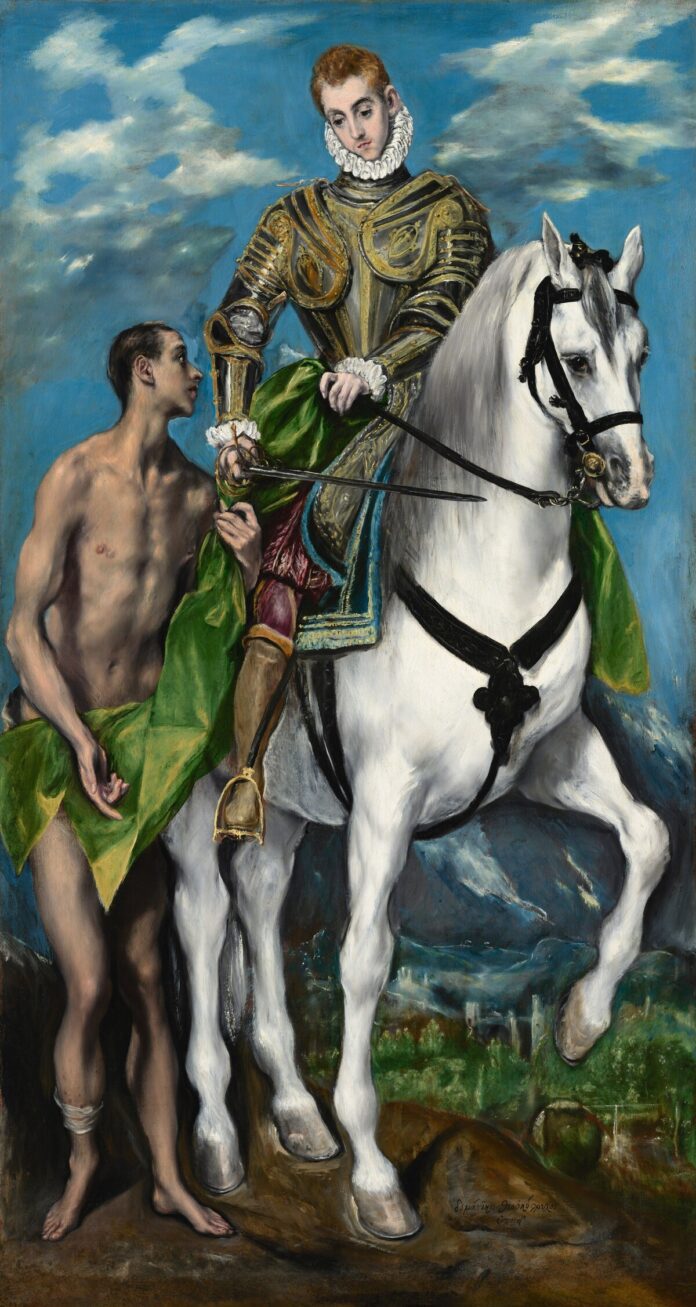The legs, both human and equine, are what animate this picture by the great El Greco. Lined up in the painting’s lower left quadrant, they’re all bone and sinew and undulating contours. And by their simple repetition, they come to seem peculiar, like an innocuous word uttered again and again until the sound becomes estranged from its meaning.
Nothing, El Greco wanted us to know, is concrete. Nothing is solid. All is mutable and transient.
This painting, more than 6 feet high, is in the collection of the National Gallery of Art (a smaller version is at the Art Institute of Chicago). It was an altarpiece commissioned for the San José chapel in Toledo, Spain. It shows Martin of Tours, a 4th-century saint who served in the Roman army, converted to Christianity and became bishop of Tours, giving half of his cloak to a beggar. The legs of the beggar line up with the three grounded legs of Martin’s white horse, over which the saint exercises perfect control, even with only one hand on the reins.
The limbs’ rippling outlines are echoed by the beggar’s bare arm and bony chest, which seems afflicted by an indeterminate, flickering light casting smoky shadows. These shadows, conveyed by fidgety brushstrokes, would become characteristic of El Greco from around 1600 until his death in 1614.
In El Greco’s paintings, the possibility of divine intercession is always in play. They give us access to an alternative world. His images tremble and billow. But El Greco didn’t paint movement in a way that was pinned to a particular subject or moment. Instead, he used his feeling for change and transience to register states outside our usual experience of the material world and its everyday time signatures.
A picture of a saint who has used his sword to cut his cloak in two and now gives half to a freezing beggar is not, in El Greco’s conception, an arrested action or a snippet of time, like a photograph. It is an ongoing process, a transformation. It is a religious event — two men opening themselves up to the motions of grace. El Greco wants us to see this, to feel it. He wants to demonstrate the transformational power of compassion.
To do this, he has to remind us that such a transformation is within our own grasp. So he paints Martin in fashionable armor and includes a view of his hometown of Toledo, visible through the horse’s legs. He wants to make it relevant to a contemporary audience.
But at the same time, he wants to remove us from the everyday world. So he shifts us into a timeless space where forms echo and evanesce and seem to slide away from themselves like clouds before coalescing again under the banner of a whole new meaning.
Which is what exactly?
Compassion. Redemption. Or so I surmise. But of course, these are just human words. It is not enough to utter them. El Greco is showing us, through Saint Martin, how to live them.



